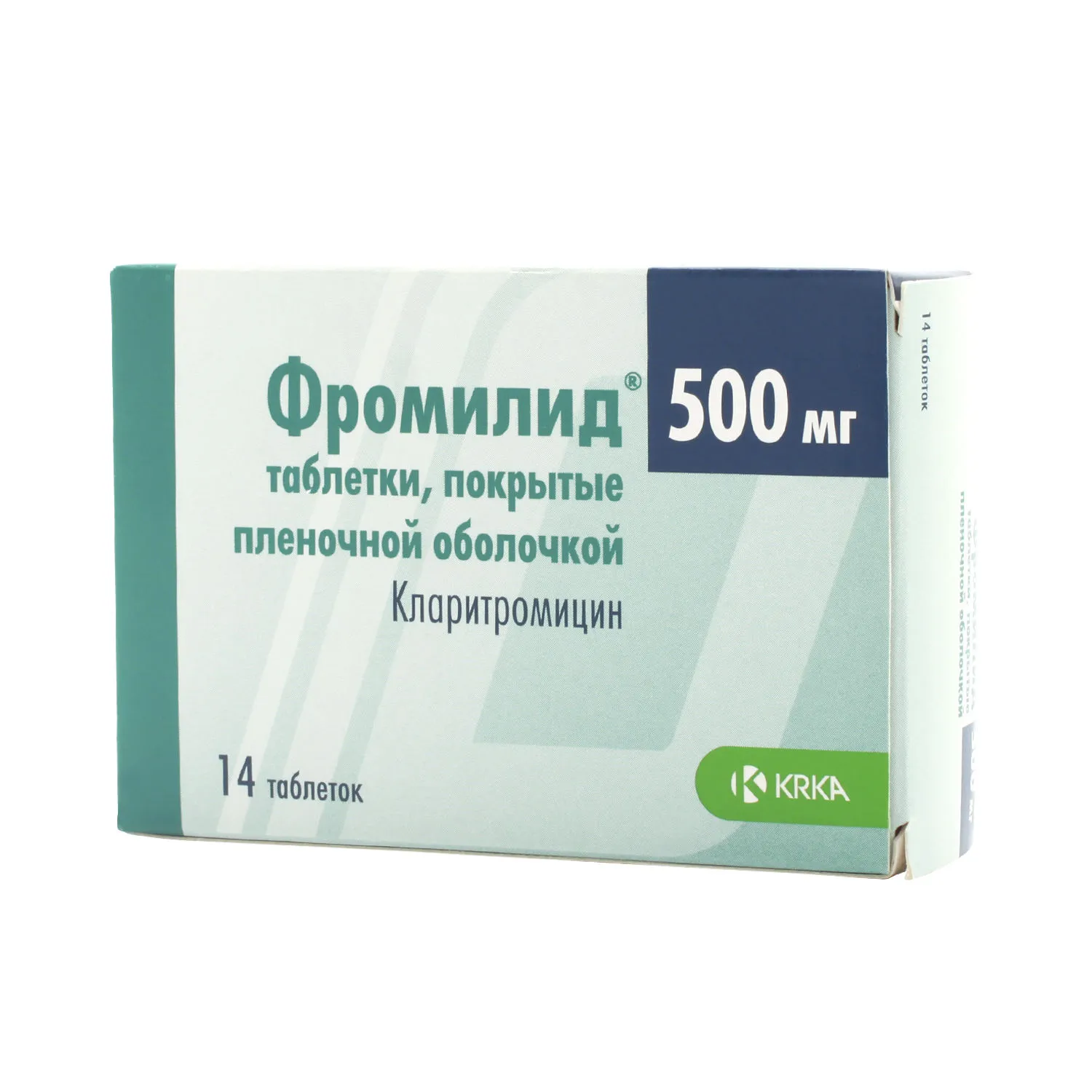Description
Fromilid Coated Tablets 500 mg. №14
Composition:
Each coated tablet contains 500 mg of clarithromycin.
Mechanism of Action:
Clarithromycin, a macrolide antibiotic, works by inhibiting bacterial protein synthesis, thus exerting its bacteriostatic effect against susceptible organisms.
Pharmacological Properties:
Clarithromycin exhibits broad-spectrum activity against various Gram-positive and Gram-negative bacteria. It penetrates well into respiratory tissues, skin, and soft tissues, achieving therapeutic concentrations.
Indications for Use:
- Treatment of respiratory tract infections
- Management of skin and soft tissue infections
- Helicobacter pylori eradication in peptic ulcer disease
Contraindications:
Avoid using Fromilid tablets if there is a known hypersensitivity to clarithromycin or other macrolide antibiotics. Caution is advised in patients with a history of cholestatic jaundice or hepatic dysfunction associated with prior clarithromycin use.
Side Effects:
Common side effects of Fromilid may include nausea, diarrhea, abdominal pain, and dysgeusia. In rare cases, severe adverse reactions such as hepatotoxicity and Clostridium difficile-associated diarrhea can occur.
Usage Instructions:
The recommended dosage for adults is one 500 mg tablet taken orally twice daily, preferably with a full glass of water. The tablets should be swallowed whole and not chewed or crushed.
Benefits Compared to Analogues:
Fromilid offers the advantage of a convenient dosing regimen with proven efficacy against a spectrum of bacterial infections, including those affecting the respiratory system and skin.
Suitable Patient Groups:
Fromilid can be used in both adult and elderly populations. However, caution is advised in pediatric patients, and dosage adjustments may be necessary based on individual patient factors.
Storage and Shelf Life:
Store Fromilid tablets in a cool, dry place away from direct sunlight. Ensure proper sealing of the original packaging to protect from moisture. Check the expiry date on the packaging and do not use expired tablets.
Packaging Description:
Fromilid tablets are typically packaged in blister packs containing 14 tablets. The packaging is designed to maintain the stability and integrity of the tablets until use.
Clinical Evidence and Proven Effectiveness:
Studies have shown that clarithromycin, the active ingredient in Fromilid tablets, effectively treats respiratory infections and exhibits favorable outcomes in skin and soft tissue infections. Research in the Journal of Antimicrobial Chemotherapy supports the efficacy of clarithromycin in combating various bacterial pathogens.





